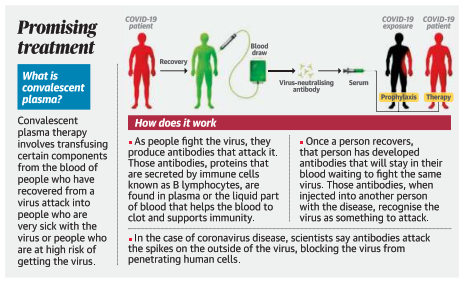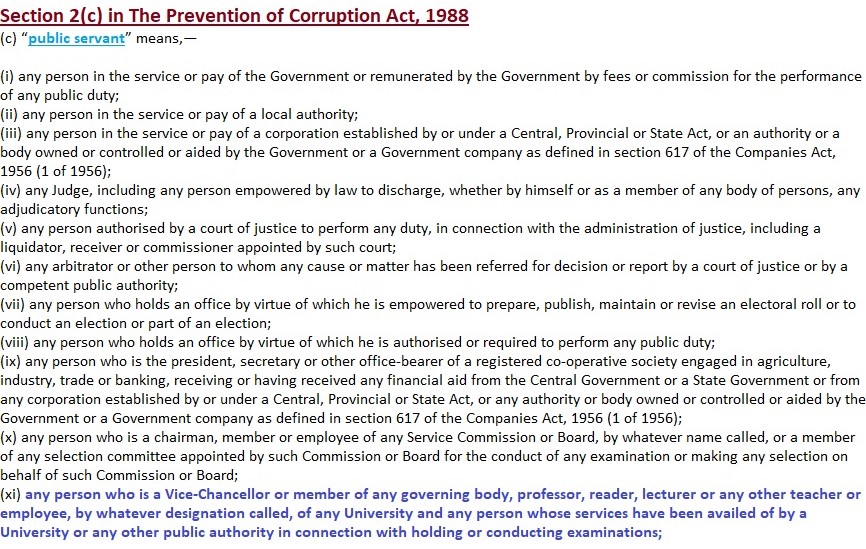29th April 2020 Current Affairs in English from The Hindu Newspaper

29th April 2020 Current Affairs in English – Today Current affairs PDF link available below.
Dear Aspirants, we (Vetripadi.com team) have come with Daily Current affairs analysis. It is prepared to crack the various competitive exams. We are here to make sure your preparation easy. We will update the current affairs every day. It will help for both preliminary and mains (facts oriented with background information) for your preparation. We need you support.
VETRIPADI Daily Newsletter
வெற்றிப்படி.காம் | வெற்றிக்கு நீ படி!!!
Daily Current affairs for Competitive
Exams ( UPSC, TNPSC, SSC)
29th APRIL 2020
TABLE OF CONTENTS
- Corona Related Information in News
- 51 more deaths as cases near 30,000
- Coronavirus | Health Ministry does a U-turn on plasma therapy
- Coronavirus | $1.5 billion ADB loan to fund COVID-19 emergency response
- starts planning for Haridwar Kumbh Mela
- Animal poaching registers a sharp increase during lockdown
- S. Commission on International Religious Freedom downgrades India in 2020 list
- Mid-day meals on during vacation
- Anti-graft law covers deemed universities
- Niti Aayog questions Australian institute’s terror ranking of India.
1. Corona Related Information in News
1. 51 more deaths as cases near 30,000
Information in News
- The Health Minister has said that India will be able to produce RT-PCR and antibody test kits and will help us in meeting our target of 1 lakh tests per day by May-end
- All processes are in advanced stage and production will start after getting approval from ICMR and issued directions to expedite the development of anti-body detection kits, real-time PCR based detection kits and vaccines for COVID-19 under Make in India.
- Stating that India is tackling COVID through a graded, pro-active and pre-emptive response strategy.
- Ministry has issued guidelines on home isolation for very mild/pre-symptomatic patients.
- Patients who have a requisite facility at their residence for self-isolation will have the option for home isolation.

Make in India
- Make in India is a major national programme of the Government of India designed to facilitate investment, foster innovation, enhance skill development, protect intellectual property and build best in class manufacturing infrastructure in the country.
- The primary objective of this initiative is to attract investments from across the globe and strengthen India’s manufacturing sector.
- It is being led by the Department for Promotion of Industry and Internal Trade (DPIIT), Ministry of Commerce and Industry, Government of India.
- The Make in India programme is very important for the economic growth of India as it aims at utilising the existing Indian talent base, creating additional employment opportunities and empowering secondary and tertiary sector.
- The programme also aims at improving India’s rank on the Ease of Doing Business index by eliminating the unnecessary laws and regulations, making bureaucratic processes easier, making the government more transparent, responsive and accountable.
- Prime Minister of India, Mr Narendra Modi said while introducing the programme in his maiden Independence Day speech from the ramparts of the Red Fort on August 15, 2014.
- The initiative was formally introduced on September 25, 2014 by Mr Modi at Vigyan Bhawan, New Delhi, in the presence of business giants from India.
- The focus of Make in India programme is on 25 sectors. These include:
- automobiles, automobile components, aviation, biotechnology, chemicals, construction, defence manufacturing electrical machinery, electronic systems, food processing, IT & BPM, leather, media and entertainment, mining, oil and gas, pharmaceuticals, ports and shipping, railways, renewable energy, roads and highways, space, textile and garments, thermal power, tourism and hospitality and wellness.
2. Coronavirus | Health Ministry does a U-turn on plasma therapy
Information in News
- Plasma therapy is not an approved treatment for COVID-19 and is only one of the several therapies which is being explored currently, the Health Ministry said on Tuesday, adding that the therapy is still at an experimental stage and the Indian Council for Medical Research (ICMR) is currently studying its efficacy.
- The misuse of this plasma can have fatal outcome for the patients,added the Ministry.
- The Health Ministry statement comes days after the Drug Controller-General of India gave its go-ahead to a proposal by the ICMR for the clinical trial of convalescent plasma therapy in COVID-19 patients as per the protocol developed by ICMR.
- The regulator had said the Institute may do so in consultation with the health research body.
- The Ministry had last week asked the Indian Red Cross Society (IRCS) to contact recovered COVID-19 patients to come forward for blood donation, from which convalescent plasma could be collected and used for transfusion to the COVID-19 affected patients for their early recovery.
- Delhi, Gujarat and Maharashtra, Telangana among other States, have started clinical trials for the plasma-based treatment.
Past Trails
In 2014 convalescent plasma, collected from patients who had recovered from Ebola virus disease, was recommended by the World Health Organisation (WHO) as an empirical treatment during the outbreak.
- During the H1N1 virus outbreak of 2009 and SARS epidemic of 2003, plasma therapy was used to treat patients.
- Plasma treatment is done by taking blood plasma from a cured COVID-19 patient to treat positive cases to effectively strengthen the immune system.

Reference
3. Coronavirus | $1.5 billion ADB loan to fund COVID-19 emergency response
- The Government of India has taken a $1.5 billion loan from the Asian Development Bank (ADB) to fund its immediate response to the coronavirus (COVID-19) pandemic, both in terms of the health and socio-economic impacts.
- The loan approved by the ADB under its COVID-19 Active Response and Expenditure Support (CARES) Programme, is the bank’s largest ever to India.
- The Centre will also take the ADB’s technical support to strengthen its implementation framework and capacities to deliver the Rs. 1.7 lakh crore welfare package announced last month.
Significance
- It will be spent to implement the containment plan and rapidly ramp up test-track-treatment capacity.
- It will also be used to provide social protection for 80 crore poor people over the next three months.
Further Extension
- The bank is also in talks with the government to fund further short- to medium-term economic stimulus measures,
- including support for Micro, Small & Medium Enterprises (MSMEs) and for extending health services through public-private partnerships.
- This would include support for the MSMEs by facilitating access to finance through credit guarantee schemes, integration into global and national value chains through enterprise development centres, and a credit enhancement facility for infrastructure projects.
Asian Development Bank
- Asian Development Bank established in 1966 and its Headquarter in Manila, Philippines
- It is a multi-lateral lending agency and modeled on the World Bank and has a similar weighted voting systemwhere votes are distributed in proportion with members’ capital subscriptions.
- The aim of this bank was to accelerate economic and social development in Asia and pacific region.
- The bank admits the members ofthe United Nations Economic and Social Commission for Asia and the Pacific and Non regional Developed Countries.
- The bank started its functioning on January 1, 1967.
- Its chairmanship is always given to Japanese and 3 deputy chairmen belong to USA, Europe and Asia.
Functions of Asian Development Bank (ADB)
- To make loans and equity investments for economic and social development of its developing members countries.
- To provide for technical assistance for the preparation and implementation of development projects and advisory services.
- This bank constituted Asian Development Fund in 1974, which provides loans to Asian countries on concessional interest rates.
- To respond to the request for assistance in coordinating developmental policies and plans in developing member countries.
Reference
2. Govt. starts planning for Haridwar Kumbh Mela
Information in News
- The government has begun planning for the Maha Kumbh Mela (the festival of the sacred Pitcher) in Haridwar, Uttarakhand, in January 2021.
- An April 16 meeting, organised by the National Mission for Clean Ganga (NMCG), the Water Ministry body overseeing the cleanup of the river, discussed funds needed by the
- Uttarakhand government for providing community toilets and urinals for the attendees.
- A similar Kumbh was organised in Prayagraj in 2019.
Kumbh Mela
- The Maha Kumbh Mela is organised once in 12 years, and the last time the event was held in 2010, about 10 million reportedly congregated in the city.
- The gathering has a long history and draws large crowds from the world over, who come to take a ritualistic dip in the Ganga.
- Devotees believe that by bathing in the Ganges one is freed from sins liberating her/him from the cycle of birth and death.
- The festival is held at Allahabad, Haridwar, Ujjain and Nasik every four years by rotation and is attended by millions of people irrespective of caste, creed or gender.

Reference
3. Animal poaching registers a sharp increase during lockdown
Information in News
- Besides killing chinkaras and blackbucks, the poachers have targeted peacocks, grey francolins and other birds covered under the Wildlife Protection Act, 1972, as endangered species.
- Several of the cases were detected and reported to the forest authorities by the members of the Bishnoi community, which is known for its beliefs associated with nature worship and wildlife conservation.
- Ranthambore National Park in Sawai Madhopur district.
- Environmental activist Anil Bishnoi, a recipient of the State-level Amrita Devi Environmental Award in 2009.
- The chinkaras are usually poached in Rajasthan, allegedly by the Bawaria community, whose traditional occupation is hunting.
Ranthambore National Park
- Ranthambore National Park is one of the biggest and most renowned national park in Northern India.
- The park is located in the Sawai Madhopur district of southeastern Rajasthan, which is about 130 km from Jaipur.
- Being considered as one of the famous and former hunting grounds of the Maharajas of Jaipur,
- Today the Ranthambore National Park terrain is major wildlife tourist attraction spot that has pulled the attention of many wildlife photographers and lovers in this destination.
Wildlife Protection Act 1972
- The Wildlife Protection Act, 1972 is an Act of the Parliament of India enacted for protection of plants and animal species.
- The Act provides for the protection of wild animals, birds and plants; and for matters connected there with or ancillary or incidental thereto.
- It extends to the whole of India.
- Wildlife Protection Act 1972
- It has six schedules which give varying degrees of protection.
- Schedule I and part II of Schedule II provide absolute protection – offences under these are prescribed the highest penalties.
- Species listed in Schedule III and Schedule IV are also protected, but the penalties are much lower.
- Schedule V includes the animals which may be hunted.
- The specified endemic plants in Schedule VI are prohibited from cultivation and planting.
- The hunting to the Enforcement authorities have the power to compound offences under this Schedule (i.e. they impose fines on the offenders).
Reference
4. U.S. Commission on International Religious Freedom downgrades India in 2020 list
Information in News
- The U.S. Commission on International Religious Freedom (USCIRF) has downgraded India to the lowest ranking, “countries of particular concern” (CPC) in its 2020 report.
- The report, released in Washington by the federal government commission that functions as an advisory body, placed India alongside countries, including China, North Korea, Saudi Arabia and Pakistan.
- India was categorised as a “Tier 2 country” in last year’s listing.
- This is the first time since 2004 that India has been placed in this category.
Reason for Downgrades
- India took a sharp downward turn in 2019, the commission noted in its report, which included specific concerns about the
- Citizenship Amendment Act,
- The proposed National Register for Citizens,
- Anti-conversion laws and
- The situation in Jammu and Kashmir.
India’s Comment
- The Centre reacted sharply to the USCIRF report on Tuesday, terming it “biased and tendentious” and rejected its observations.
US Commision Said
- The commission also recommended that the U.S. government take stringent action against India under the “International Religious Freedom Act” (IRFA).
- It called on the administration to “impose targeted sanctions on Indian government agencies and officials responsible for severe violations of religious freedom by freezing those individuals’ assets and/or barring their entry into the United States under human rights-related financial and visa authorities, citing specific religious freedom violations”.
Reference
https://www.thehindu.com/news/national/uscirf-downgrades-india-in-2020-list/article31457624.ece
5. Mid-day meals on during vacation
Information in News
- The Centre plans to extend the mid-day meal scheme in government schools over the summer holidays due to the COVID-19 lockdown.
- However, reports from States suggest that the current implementation of the mid-day meal scheme has been patchy and variable across different regions.
- While Kerala is providing actual cooked meals delivered to the homes of poor students,
- A large number of other States, including Karnataka and West Bengal, are providing dry rations to students’ families in lieu of cooked meals during the lockdown.
- Nationwide, 5 crore children studying in Class 1 to 8 in 11.34 lakh schools depend on the scheme for a nutritious lunch.
- Delhi schools do not seem to be offering either option, with officials simply pointing to the cooked meals being offered at general relief centres across the city.
- Nishank, Human Resource Development Minister also urged States to begin the process of evaluating answer sheets of completed State Board exams during the lockdown itself, and facilitate the Central Board of Secondary Education (CBSE) in its correction of answer sheets as well.
Reference
https://www.thehindu.com/news/national/mid-day-meals-on-during-vacation/article31457235.ece
Mid-day Meal Scheme
The Mid-day Meal Scheme is a school meal programme of the Government of India designed to better the nutritional standing of school-age children nationwide.
The programme supplies free lunches on working days for children in primary and upper primary classes in government, government aided, local body, Education Guarantee Scheme, and alternate innovative education centres, Madarsa and Maqtabs supported under Sarva Shiksha Abhiyan, and National Child Labour Project schools run by the ministry of labour.
Under article 24, of the Convention on the Rights of the Child, to which India is a party. India has committed to yielding “adequate nutritious food” for children. The programme has undergone many changes since its launch in 1995.
The Midday Meal Scheme is covered by the National Food Security Act, 2013.
The legal backing to the Indian school meal programme is akin to the legal backing provided in the US through the National School Lunch Act.
6. Anti-graft law covers deemed universities
Information in News
- The Supreme Court has held that bribery and corruption in a deemed university can be tried under the Prevention of Corruption Act.
- Individuals, authorities or officials connected to a deemed university, whatever be their role or designation, come under the definition of a ‘public servant’. They can be tried and punished under the anti-corruption law.
- Deemed universities come within the ambit of the term ‘university’ in Section 2(c)(xi) of the Prevention of Corruption (PC) Act, 1988.
Deemed University
- A deemed institution under the University Grants Commission Act of 1956 has the same common public duty like a university to confer academic degrees, which are recognised in the society.
- Officials of a deemed varsity, though not seen as public servants in the conventional sense, perform duties in the discharge of which the State, the public and the community at large has an interest, a three-judge Bench led by Justice N.V. Ramana reasoned in a judgment pronounced on April 27.
Objective of the PC Act
- The object of the PC Act was not only to prevent the social evil of bribery and corruption, but also to make the same applicable to individuals who might conventionally not be considered public servants.
- The purpose under the PC Act was to shift focus from those who are traditionally called public officials, to those individuals who perform public duties.
- Keeping the same in mind, it cannot be stated that a deemed university and the officials therein, perform any less or any different a public duty.
Section 2(c)(xi) of the Prevention of Corruption (PC) Act, 1988.
(c) “Public servant” means
(xi) any person who is a Vice-Chancellor or member of any governing body, professor, reader, lecturer or any other teacher or employee, by whatever designation called, of any University and any person whose services have been availed of by a University or any other public authority in connection with holding or conducting examinations.

7. Niti Aayog questions Australian institute’s terror ranking of India
Information in News
- Niti Aayog questioned the methodology adopted by an Australian based institute to rank India as the seventh worst terrorism affected country ahead of conflict-ridden countries such as the Democratic Republic of Congo, South Sudan, Sudan, Burkina Faso, Palestine and Lebanon.
- And also questions the opaque funding of the Institute for Economics and Peace (IEP).
Global Terrorism Index (GTI) 2019
- India has moved to the seventh position from the previous year’s eighth in the annual Global Terrorism Index (GTI) 2019.
- The countries ahead of it are Afghanistan, Iraq, Nigeria, Syria, Pakistan and Somalia.
- GTI scores are
- directly used in the Global Peace Index, the Global Slavery Report published by the Walk Free Foundation,
- Indirectly used in computing country scores in the World Economic Forum’s Travel and Tourism Competitiveness and Global Competitiveness Indices and compilation of Safe Cities Index by the Economist Intelligence Unit.
Critics on GTI
- It is indeed surprising that an organization is able to annually collect, meaningfully analyse and disseminate data about 163 countries in the Global Terrorism and Peace Indices and provide country wise national peace reports with just 24 staff members and 6 volunteers, reported by NITI Aayog.
- The large diversity in definitions of terrorism amongst countries, and the lack of a universally accepted definition of terrorism, including in the Comprehensive Convention on International Terrorism pending in the UN General Assembly since 2014, leads to a great deal of ambiguity in calculating and understanding GTI reports.
The Institute for Economics & Peace, is a global think tank headquartered in Sydney, Australia with branches in New York City, Mexico City and The Hague. Founded in 2007.
Reference

